Life isn’t all Lambos and luxury but for today at least we’re turning our cameras to practical tips to improve your car photography techniques.
Cars, like people, come in all shapes, sizes and colours which means there isn’t one universal approach. But there are general considerations which you need to keep in mind.
Maybe you want to try out something new, or maybe you’re thinking of selling your car and need some good advert photos? Either way, we’ll give you all the car photography tips you’ll need to get started.
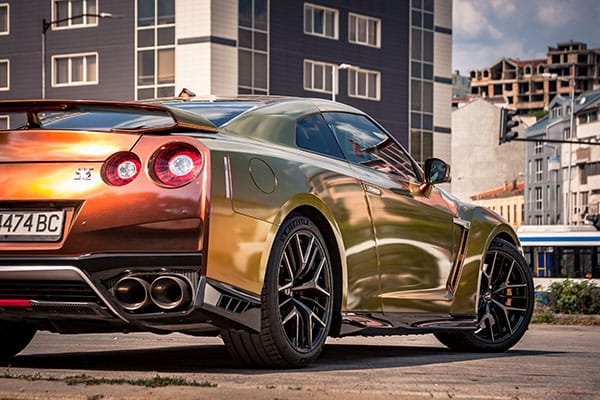
You can start your car photography with what’s sitting on your own driveway. Like we said it doesn’t have to be supercars and expensive autos that you’re shooting. Some automotive photographers will head over to car dealerships to ask to take shots of their latest models – but you don’t have to start there.
Firstly it’s best to give your car a full clean and valet. Streaks, direct and dents will be visible in your shots and it takes more time to edit them out than it would to do with a little soap and water beforehand.
Shooting your car photography at home may present problems with messy backgrounds of other cars, houses and passersby. This is why you may get a better overall image if you drive your car out to somewhere quiet. A local woodland, empty car park or scrubland will take the attention away from the messy background and keep it on the car.
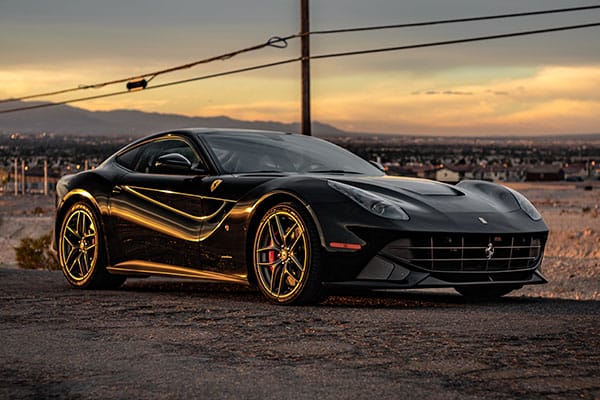
When picking the best camera for car photography you need to consider only one thing – does it have manual controls? If your current camera does then you’ve got the best camera for car photography already – so no need to upgrade!
Manual controls will give you the ability to alter depth of field, play around with shutter speed (which is great if you want movement shots) as well as choose your specific focus point.
There are benefits to each type of system, so try to go for the one which best suits your needs. If you intend to photograph moving cars, a camera that offers a fast frame rate can be a good idea.
Some iPhone and Android phones can happily shoot decent car photographs using portrait mode which reduces the depth of field when closing up.
Either way, it’s not too important to get lost in which camera is best for car photography, as you may know by now that lenses have a greater impact on the quality of a photo.
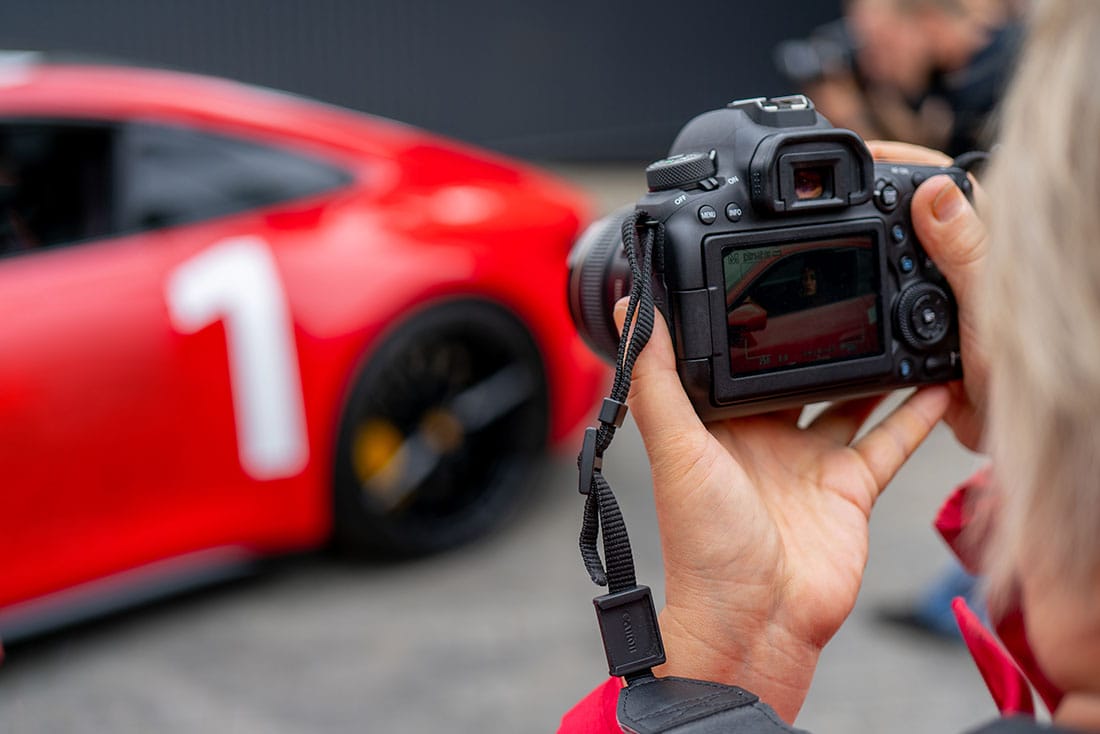
Putting the best possible glass quality in front of your camera is key to making your car photography look striking and sharp.
For car photography, we’d recommend investing in a decent wide-angle lens. Look for a lens with image stabilisation (IS/VR) to give you a little latitude on how slow your shutter speed goes if you’re shooting in low light.
A focal length that falls between 20mm-50mm will give you a healthy range of options when it comes to shooting different angles. Car photography is all about overemphasising the shapes, colours and lines on the vehicle and wide-angle lenses are the best types of lens to overemphasise anything when used correctly.
Here are our recommendations for the best current lenses for car photography;
As well as a wide-angle lens, you may want to consider a prime lens (especially if it has Macro functionality) as a secondary lens for your car photography. Macro functions are good for picking out details – whether that’s a car badge or dials and buttons on the interior.
Other equipment you should consider include a tripod, which can come in useful for a variety of reasons that we’ll look at shortly. Look for a light and portable tripod – carbon fibre ones will be your best choice.
Our car photography tips and techniques cover a range of ideas and approaches that you can apply to whatever car you’re shooting – saloon, hatchback or MPV. Take a little bit of time to consider what’s unique and interesting about your car.
We’ve got 6 car photography tips to try out and capture stylish shots of your pride and joy!
Sports cars, especially, are known for their power and imposing noise on the streets.
To emphasise that stature in your car photography, get down low and shoot on a wide-angle lens to make your motor look grand and overwhelming.
Shooting around 20mm will give you that wide view and convex curvature.

Certain cars are designed for particular environments. Think of an off-roader, taking a picture of a 4×4 would seem odd in a city. Aim to create a greater context for your motor by using the appropriate setting.
Take your off-roader to natural surroundings, sports cars to the racetrack and vintage rollers to retro locations. Car photography is not only about making your car look clean and striking but also creating a sense of narrative and what the car is designed for – sports, adventure, city living, family etc.
It’s important to make sure that your subject and background work together. If you are struggling to get the car to the right location then otherwise look for a plain setting that is non-descript such as a wall, garage door or car park.

A sneaky insider secret from pro-car photographers!
When parking your vehicle, turn the front wheels in the opposite direction of your camera. The idea behind it is that it’ll make the car look dynamic, mid-movement, and as if it’s swerving to avoid you!
Leaving the wheels straight will make the car look flat without a sense of motion.
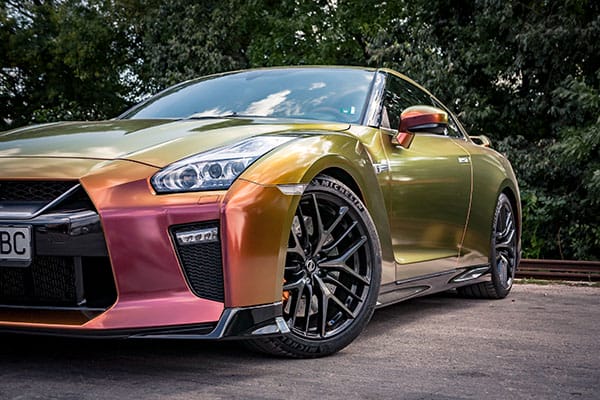
Some cars have sumptuous aerodynamic curves across their bodies. Shooting side-on (profile) to these motors will help show off those sleek rolling lines from front to back.
Keep at a low angle and use a focal length below 30mm to help with the width.
Using a shallow depth of field, shoot with a low f-stop number. Place attention on these curves and blur out any other potentially distracting elements.
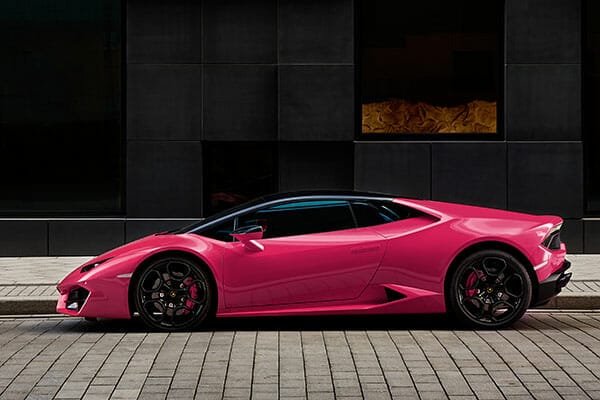
Just because a car is one unit doesn’t mean you only take one photo. Instead, think of all the different unique features and elements they have.
Capture iconic things that make particular cars unique, think about:
● Badges
● Wheels
● Spoilers
● Exhausts
● Grills
● Alloys
Oh, and don’t forget to shoot the inside too! This is a great way to create a texture filled collage, making a more colourful story. With your car photography, think about shooting:
● Steering Wheel
● Seating material
● Gearstick
● Dashboard/Console

To add a little bit of mystery to your car photography, shoot at night and provide your own lighting.
Little units such as Lume Cubes or other portable LED lights are great to expose small areas, drawing attention in a low-key format. Park under streetlights or near neon signs for different effects.
You could also advance your creativity by slowing down the shutter speed to 1-2 seconds and try out some light trails around the car. To discover a full tutorial about creating light trails around cars and other amazing techniques like this then check out the iPhotography Light Tricks course.
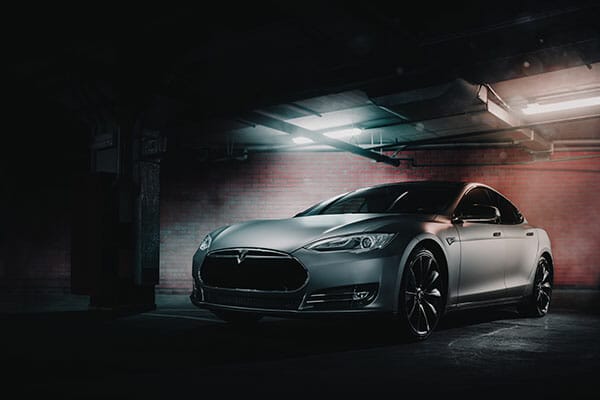
When using a lens with a short focal length you will be able to see more of the background, which means you’ll have a wider area to control with lighting or, if on location, more scenery to consider.
When it comes to choosing your camera position then your angle of view is not only the field of view but also how you want your audience to feel about the car. The decision for this should be based on the looks that you want to emphasise about the car.
Making your decision on your angle of view is personal. There’s no right or wrong option generally speaking. You need to get a feeling for the car, think about where the best lines or features are and how you’re going to show them off.
Sometimes a low angle, even shot on the ground looking up, will make cars look more powerful and menacing and other times a standard viewpoint will be more suitable.

As a photographer you are in full control of what reflects in the car. Take a look around you, then look closely at the car and see what reflects off its surface – shiny bonnets and tinted windows are the biggest issue you’ll encounter.
A car is basically a giant mirror. Try to have an open space behind your camera position as this background will be what is appearing in a reflection. One of the most important things you want to show in your car photography is the design lines of the car. But reflections can spoil these lines quickly.
As a top tip it’s good to avoid your own reflection in the photos too. If you can’t avoid your own reflection, it’s best to put the camera on a tripod, use a 5 second timer, and move out of the shot.
Polarising filters are really good at removing unwanted reflections from certain areas so it’s advisable to buy one for these car photography techniques. This can make windshields appear cleaner.

One very easy way to get striking moving car photographs is to shoot from another moving car – but please make sure you’re doing this in the safest way. Neither car has to be travelling fast either if you use the right shutter speed.
Attempt shooting the car out of a window while driving at 25mph with a shutter speed of 1/60th. Focus on the windshield of the car and use an AI Servo / C-AF mode to shoot a burst of shots so you’re not spending too long leaning out of a window.
By doing this, you’ll get some nice movement on the road and on the wheels. You can even decrease the shutter speed further, though this will increase your chances of ending up with blurry photos if the cars are travelling at different speeds.
If you would prefer a safer way to capture motion in your car photography (and we would advise it!) then try out panning.
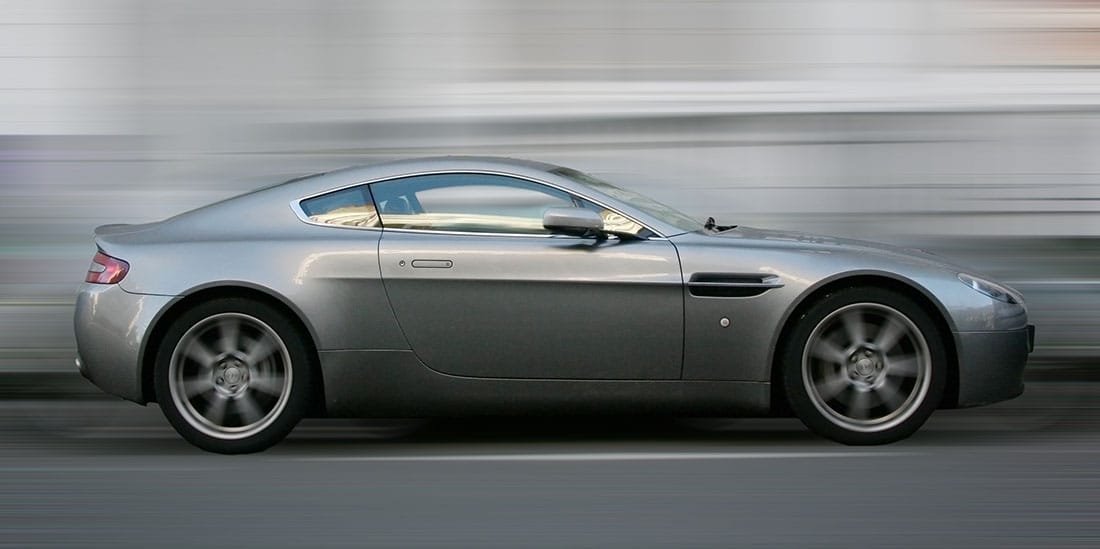
Panning is a photography technique that freezes the appearance of motion in the moving subject but makes the background appear blurred. The overall effect makes the car look crisp and clear, but the sense of speed comes from the blurry background instead.
To try out a panning photography technique, mount your camera to pan handle tripod and set the shutter speed to 1/80th to begin with. Use a sports focus tracking mode of AI Servo / C-AF mode to keep up with the movement.
Pick out a car that’s going to drive past you and focus on it. Keep your finger half pressed on the shutter button to keep the focus locked and track the motion as it drives towards you. Just as the car passes your position take the shot (maybe a few on burst mode actually) and then continue to track it afterwards.
If you really enjoy photographing cars, then you may want to push your knowledge by either teaming up with a professional shooter or taking a car photography course.
As we said at the start some pros have partnerships with car dealerships to allow them to shoot their latest models as soon as they arrive.
If you feel confident about your car photography techniques then why not contact an automotive photographer near you and ask them if you can tag along to their next shoot to learn the insider tips.
It’s also a good idea to look online for local car shows near you or meetings of a particular car club. This is a great way of getting to shoot cars (that are well maintained) and get to know the owners. Also, you will most likely meet other keen and some professional automotive photographers that may be able to give you tips and advice.
Discover the BEST way on how to clean a camera sensor using swaps, rocket blowers and pencil brushes to give your shots a dust-free finish!
Capture the magic of the night with our beginner’s guide to night photography. Learn tips and techniques for stunning results.
Master the art of solar eclipse photography with expert tips on equipment, settings, and precautions for stunning celestial images.
Learn the basics of photography – fast – with our FREE 60-Second Photographer online course. Each class is short and sharp with simple, actionable steps that give you immediate results.
x 30 lessons

© iPhotography™
Become a confident and competent photographer in less than 30 minutes!
Before you leave, make sure you’ve secured your FREE online photography course (worth £29.99)
Each class is just 60-seconds or less making it the fastest and easiest way to learn photography!